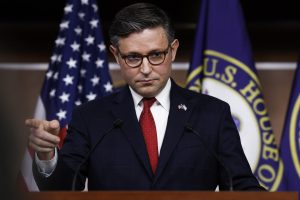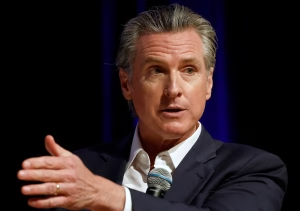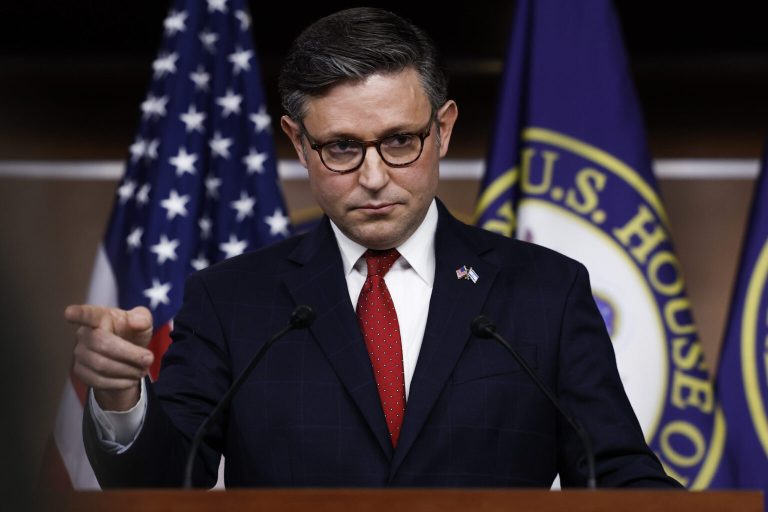Introduction
On October 7, 2025, U.S. Department of Homeland Security (DHS) Secretary Kristi Noem traveled to Portland, Oregon, to assess federal operations and engage with local officials regarding ongoing protests outside the U.S. Immigration and Customs Enforcement (ICE) facility in the South Waterfront district. The visit came amid heightened tensions between federal and state authorities over security measures, law enforcement protocols, and the deployment of federal resources in response to public demonstrations. Secretary Noem’s trip highlighted the continuing debate over the federal government’s role in local jurisdictions and the complexities of balancing public safety with community concerns.
Arrival and Initial Engagement
Secretary Noem arrived in Portland via U.S. Coast Guard aircraft and was greeted at the airport by Oregon Governor Tina Kotek. The two leaders held a brief meeting before Secretary Noem proceeded to the ICE facility. Accompanying her were several conservative media figures, including Benny Johnson, Nick Sortor, and David Medina, who actively documented the visit on social media. The presence of these individuals amplified coverage of the trip and contributed to widespread public attention, particularly among online audiences that follow federal policy developments closely.
Upon reaching the ICE facility, Secretary Noem conducted an initial walkthrough to observe security protocols and meet with federal officers stationed at the site. During this inspection, she emphasized the need for heightened vigilance and outlined potential areas where federal measures could be strengthened if local authorities were unable to guarantee the protection of federal personnel and property.
Meeting with Local Officials
Following the tour of the facility, Secretary Noem met with Portland Mayor Keith Wilson to discuss public safety concerns and ongoing demonstrations. During the meeting, Noem emphasized the safety risks faced by federal officers and suggested that additional federal support might be necessary if local authorities did not implement further protective measures. She noted that ensuring the safety of federal personnel was a priority for DHS, and that failure to provide adequate security could result in expanded federal deployment within the city.
Mayor Wilson acknowledged the federal perspective but reiterated Portland’s commitment to upholding free speech and civil liberties. He stressed that local decisions regarding public safety measures would continue to reflect the city’s legal obligations and community priorities. As part of the ongoing dialogue between federal and city officials, Mayor Wilson ordered the removal of certain barriers near the ICE facility—a step some city council members had previously advocated. This action was interpreted by observers as a compromise aimed at addressing federal security concerns while maintaining community access and protest rights.
The discussion also addressed broader concerns regarding cooperation between federal and local law enforcement. Secretary Noem emphasized the importance of coordination to prevent disruptions and ensure that both federal objectives and municipal standards were met. Mayor Wilson, in turn, highlighted the city’s efforts to maintain a balance between law enforcement operations and community engagement, noting that Portland had implemented measures to monitor protests and provide safe spaces for public assembly.
Public Demonstrations and Community Response
While Secretary Noem was present, a group of protesters gathered outside the ICE facility. The demonstrations were largely peaceful, with participants holding signs and voicing opposition to federal immigration policies. Protesters emphasized their concern over the use of federal resources in local jurisdictions and expressed support for maintaining oversight of immigration enforcement at the municipal level.
Community members and local advocacy groups praised the ability to express dissent while remaining within the boundaries of the law. At the same time, federal officers and security personnel observed the demonstrations closely, highlighting the ongoing challenge of balancing freedom of expression with the need to maintain a secure operational environment.
The visit also sparked discussion among residents about the broader implications of federal intervention in city affairs. Some Portland citizens expressed concern that the presence of federal officials could be interpreted as an effort to intimidate or influence local policy decisions. Others argued that the federal government has a legitimate responsibility to ensure the safety of its personnel and facilities, particularly in locations where protests have previously escalated into confrontations.
Media Coverage and Public Perception
Secretary Noem’s visit generated extensive media coverage. News outlets reported on her interactions with local officials, the discussions surrounding security measures, and the presence of conservative influencers documenting the trip. Some reports characterized the visit as a strategic move by the federal government to emphasize Portland’s ongoing challenges with protest management and law enforcement. Others focused on the dialogue between Secretary Noem and Mayor Wilson, highlighting the efforts to reach a collaborative solution that balanced federal security requirements with the city’s commitment to civil liberties.
Social media played a prominent role in shaping public perception. Conservative commentators highlighted Secretary Noem’s engagement with federal officers and her calls for increased security as an example of proactive leadership. Conversely, some community activists framed the visit as symbolic of heightened federal oversight, raising questions about local autonomy and the potential for increased tension between federal and municipal authorities.
Federal-State Coordination and Policy Implications
The visit underscored the ongoing need for coordination between federal and local authorities in managing public safety and immigration enforcement. Secretary Noem’s presence signaled the federal government’s willingness to intervene when security concerns arise, while Mayor Wilson’s responses demonstrated a commitment to maintaining local governance and respecting civil liberties.
The discussions also highlighted potential policy implications. Federal officials have previously expressed concerns about the adequacy of security measures at ICE facilities nationwide, citing the need to prevent disruptions to operations and ensure officer safety. Local leaders, in turn, have emphasized the importance of preserving protest rights and maintaining oversight of federal activities in their jurisdictions. The negotiation between these priorities remains a complex challenge for both sides.
Observers noted that the visit may serve as a precedent for future interactions between federal agencies and municipalities facing similar tensions. As cities across the country navigate debates over federal resource deployment, public safety, and civil liberties, the Portland case provides insight into the delicate balance required to address competing priorities.
Conclusion
Secretary Kristi Noem’s visit to Portland highlighted the ongoing tensions between federal and state authorities over immigration enforcement, public safety, and community engagement. The visit demonstrated the federal government’s commitment to protecting its personnel and ensuring operational security, while also drawing attention to the city’s dedication to civil liberties and local governance.
By engaging directly with local officials, touring federal facilities, and observing public demonstrations, Secretary Noem sought to address immediate security concerns while fostering dialogue between federal and municipal authorities. The presence of media figures documenting the visit further amplified public attention and emphasized the political dimensions of federal-local interactions.
As federal and local authorities continue to navigate these complex issues, the Portland visit serves as a case study in balancing operational security, civil liberties, and public perception. Moving forward, the outcome of these interactions may influence policy decisions, resource allocations, and the broader discourse surrounding federal involvement in municipal affairs.
For a visual account of Secretary Noem’s visit and her interactions with federal officers, the following video provides further context.

Emily Johnson is a critically acclaimed essayist and novelist known for her thought-provoking works centered on feminism, women’s rights, and modern relationships. Born and raised in Portland, Oregon, Emily grew up with a deep love of books, often spending her afternoons at her local library. She went on to study literature and gender studies at UCLA, where she became deeply involved in activism and began publishing essays in campus journals. Her debut essay collection, Voices Unbound, struck a chord with readers nationwide for its fearless exploration of gender dynamics, identity, and the challenges faced by women in contemporary society. Emily later transitioned into fiction, writing novels that balance compelling storytelling with social commentary. Her protagonists are often strong, multidimensional women navigating love, ambition, and the struggles of everyday life, making her a favorite among readers who crave authentic, relatable narratives. Critics praise her ability to merge personal intimacy with universal themes. Off the page, Emily is an advocate for women in publishing, leading workshops that encourage young female writers to embrace their voices. She lives in Seattle with her partner and two rescue cats, where she continues to write, teach, and inspire a new generation of storytellers.









